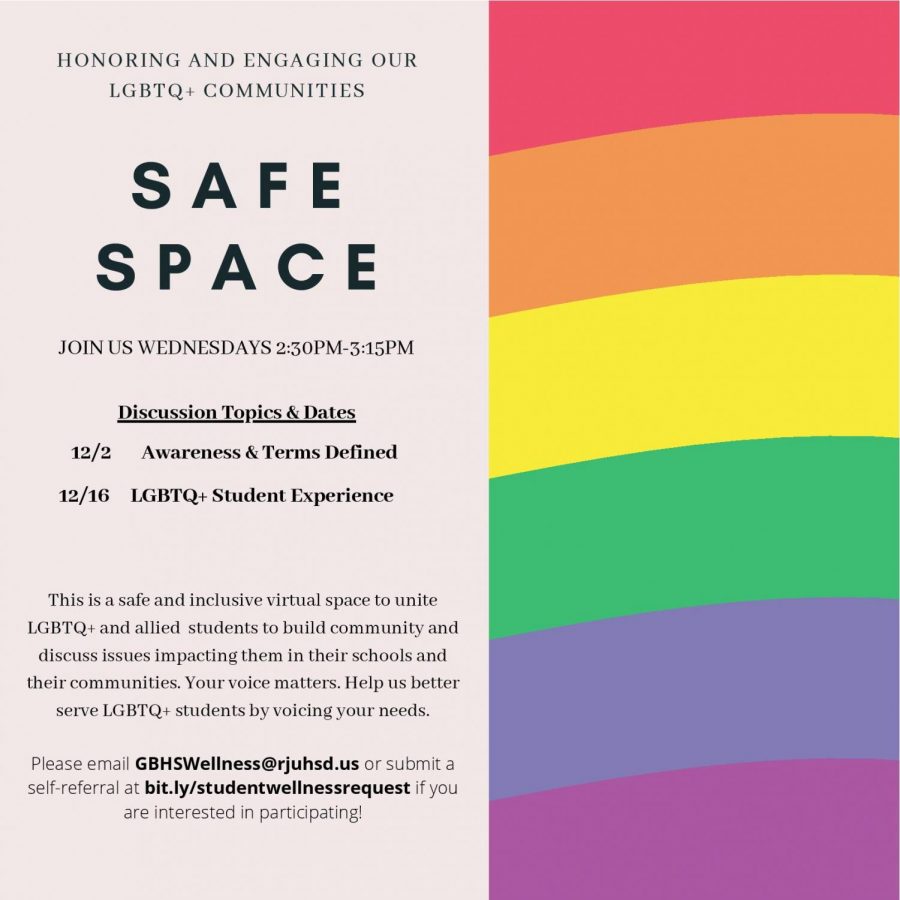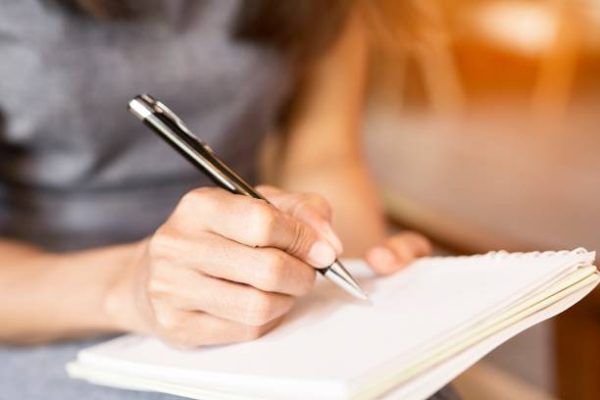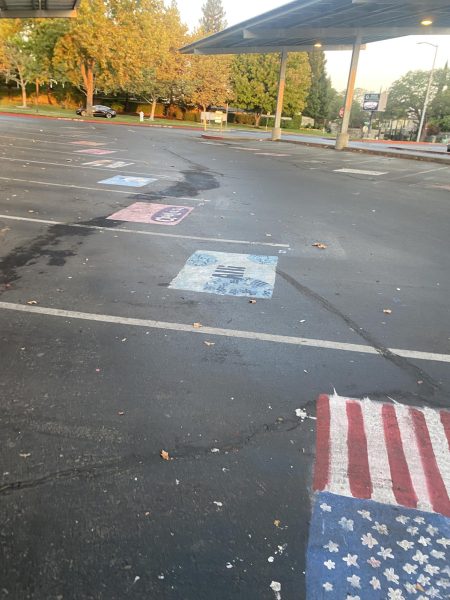LGBTQ+ representation at GBHS
GBHS has been hosting virtual events for LGBTQ+ students to have a safe space despite not being on campus.
The past few years have seen a rise in representation of members of the LGBTQ+ community on campus, but there is still a way to go to create the best environment possible for everyone.
One of the most important steps for any school to take is the establishment of a student-run Gender and Sexuality Alliance on campus. It’s a great resource for LGBTQ+ students to have an established safe space on campus, and for LGBTQ+ students and allies to work together towards the purpose of creating a safer environment for everyone at school.
The room for improvement comes in with the fact that currently, information usually has to be sought after. A lot of the time, it isn’t readily taught or offered.
“A lot of it comes down to personal responsibility and an interest and willingness to learn.” physics teacher and GSA advisor Andrew Philips said. “Especially now, there aren’t a whole lot of avenues in order to get information without actively seeking it. I think that it’s important for people to be willing to ask questions and look for answers.”
This statement can apply to anyone on campus; but sometimes it falls on teachers to model good behaviors for students.
“From day one, asking preferred pronouns, preferred name to be called, on day one you set that tone — this is a comfortable environment.,” math teacher and GSA advisor Katherine Farias said. “My philosophy as a teacher is I want to create the most comfortable environment, whether it’s in my room or over Zoom. When you bring the topic up of supporting students in the LGBT+ community, it is really my job no matter what personal beliefs I have to make them feel comfortable and can be themselves in my room. That develops trust, they trust me and connect with me. That’s my goal.”
“There aren’t a lot of trainings on how to work with a student who identifies as something other than the gender listed in the grade book (or) how to incorporate LGBT figures in your classroom, or even just LGBT concepts like what it means to be trans or asexual,” Philips said. “I think that’s a problem, but that’s the system that we’re in right now so for teachers that want to structure an inclusive classroom I think educating themselves is the most important thing. I think that there’s so much fear about doing it wrong, that people would rather just do nothing.”
Other suggestions for what any member of GBHS can do to be inclusive came from several GBHS juniors.
“Don’t presume others are cis(gender.)”
“If someone comes to you with information ask if it’s okay to refer to them as such near parents.”
“Use correct names and pronouns.”
“Do something if queer students are being bullied.”
All in all, the representation of LGBT students has progressed and still continues to move forward.
Alexandra is the Features Editor for Granite Bay Today and The Gazette. This is her second year on staff.










jayden • Sep 17, 2021 at 8:06 am
I like this article alot because all students deserve to have a place to go where they feel safe and accepted.
Dmitriy • Feb 26, 2021 at 10:36 am
This article is amazing, for it portrays that all students are welcome and should be treated equally no matter out beliefs.
Diana • Feb 5, 2021 at 10:40 am
This is a good article that explains and shows that all students should be treated the same way no matter what.
Ciana • Feb 5, 2021 at 7:54 am
This is a great article and I’m glad it covers important topics. All students deserve to be safe and treated equally.